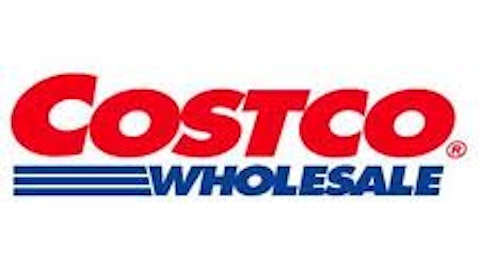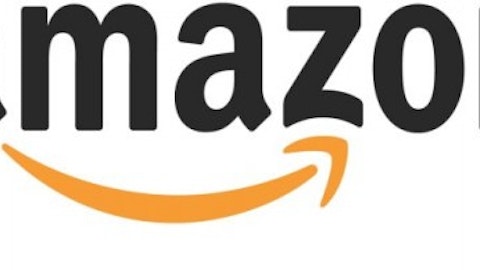Retail giant Wal-Mart Stores, Inc. (NYSE:WMT) is looking to continue its growth story, which started 50 years ago. In the US, its small-format stores such as “Express” stores and “Neighborhood” stores are the future growth drivers. It is also going global to increase its presence, expanding its sites in Canada and focusing on emerging economies. The company’s e-commerce platform is another growth driver, and it has taken several initiatives to become a strong player with some acquisitions and tie-ups.Let’s take a look at these initiatives in detail to give us a better sense of the company from an investment perspective.
Moving toward smaller-format stores in the US market

International expansion will drive sales growth
International expansion is another growth option for Wal-Mart Stores, Inc. (NYSE:WMT). Wal-Mart Canada continued to be a growth opportunity with its supercenters in the market. The expansion is going aggressively, opening 40 new supercenter sites and converting discount stores into supercenters. The company is looking for growth opportunities with “Everyday Low Prices” in emerging economies like Brazil, China and South Africa. Its acquisition of Massmart in Africa is also expected to drive sales growth in the long term.
E-commerce platform is a key to success in future
E-commerce has become a very important channel, even for big players like Wal-Mart Stores, Inc. (NYSE:WMT). After success in the US and UK markets, it is looking ahead to use social media and other technologies for creating a global platform. @Walmart labs, a digital unit designed to use social media and mobile commerce, has acquired Grabble for mobile technology. It acquired Kosmix for digital advertisement and with an investment in Yiahodian, a Chinese online store, it is moving ahead strongly in the e-commerce industry. Customers across the globe are moving towards online shopping, and the online market will continue to grow in the future.
Peer Analysis
Target Corporation (NYSE:TGT) and Costco Wholesale Corporation (NASDAQ:COST) are two other major discount stores in the US. Wal-Mart Stores, Inc. (NYSE:WMT) has been present in Canada for the last 19 years, but with the entry of Target into the country last year the company’s competition has increased. Target Corporation (NYSE:TGT) entered into partnership with Beaver Canoe, a member of the Roots Canada family, and this will be helpful for it to establish itself in this new market. Its price-matching policy with its Red card has been a good introduction as cardholders are shopping 2.5 times more often than non-cardholders. It is also strengthening its online and mobile channels with service initiatives of “Geeksquad” and “Beauty” consultants.
Costco Wholesale Corporation (NASDAQ:COST) is another player that is looking for growth through aggressive store openings. It opened 5 stores in the second quarter and has plans to open 28 new stores in this fiscal year. Its membership fee income grew 15% year-over-year, though this high growth was accelerated by deferred accounting from last year. Costco is feeling pressure on its gross margin from price investment of Wal-Mart’s “Sam’s Club” stores, but with comps growth of 6% and traffic growth of 5% last quarter it is expected to increase margins in future.
| Company | P/S ratio | Op. Margin | 1 yr. Fwd. P/E |
|---|---|---|---|
| Walmart | 0.56 | 5.65% | 13.12 |
| Target | 0.46 | 2.97% | 12.35 |
| Costco | 0.54 | 6% | 22.45 |
Wal-Mart has an operating margin of 5.65% with a relatively lower forward price-to-earnings ratio of 13.12, making it a better option than its peers. Costco has the highest operating margin of 6%, but it also has the highest forward price-to-earnings ratio of 22.45. Target has the lowest price-to-sales ratio of .46 and the lowest forward price-to-earnings ratio of 12.35, which are both good indicators for it.
Conclusion
Wal-Mart Stores, Inc. (NYSE:WMT) is coming across as a better player with its expansion strategy in the US with smaller format stores. Its international growth plans are expected to drive sales growth for it in the long term along with its initiatives of digital media and e-commerce. I believe the company is a good buy given its relatively low price-to-earnings ratio, high dividend yield (2.50%) and good growth prospects.
Ash Sharma has no position in any stocks mentioned. The Motley Fool recommends Costco Wholesale. The Motley Fool owns shares of Costco Wholesale. Ash is a member of The Motley Fool Blog Network — entries represent the personal opinion of the blogger and are not formally edited.
The article Why Should You Buy this Retail Giant? originally appeared on Fool.com and is written by Ash Sharma.
Copyright © 1995 – 2013 The Motley Fool, LLC. All rights reserved. The Motley Fool has a disclosure policy.




